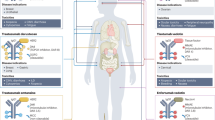Abstract
The hypoxic cell radiosensitizer desmethylmisonidazole (1-(2-nitroimidazol-1-yl)-2,3-propandiol; Ro 05-9963; DEMIS) was administered to 4 dogs at doses of 50 and 200 mg/kg by both oral and i.v. routes. The resulting plasma, cerebrospinal fluid and urinary concentrations were measured by HPLC analysis, various pharmacokinetic parameters were obtained and compared with similar data for the parent compound, misonidazole (MISO), in the dog.
Because of its shorter half-life (2·1 h) the total tissue exposure for DEMIS was only half that for a similar dose of MISO, whereas peak plasma concentrations were 60% higher than those for MISO. Cerebrospinal fluid penetration by DEMIS was limited because of the drug's reduced lipophilicity, and the total cerebrospinal-fluid exposure to the drug during the first 5 h after drug administration was about half that previously recorded for MISO.
Urinary excretion accounted for 75% of the i.v. dose of unchanged DEMIS, whilst less than 20% of MISO is excreted via this route.
DEMIS was also administered to 6 dogs bearing spontaneous tumours at a dose of 150 mg/kg i.v., and the resulting concentrations were recorded in serial biopsies over a 5h period.
Mean tumour/plasma ratios ranged between 56 and 90%, and were very similar to those previously observed for MISO in canine tumours. Peak DEMIS tumour concentrations, however, occurred rapidly after dosage (15-20 min) and were as much as twice those for MISO, although they declined rapidly from their initial concentration.
We conclude in the light of the reduced tissue exposure, particularly of the nervous tissue, and the improved tumour concentrations, that DEMIS may prove to be a potentially less toxic alternative to MISO.
This is a preview of subscription content, access via your institution
Access options
Subscribe to this journal
Receive 24 print issues and online access
$259.00 per year
only $10.79 per issue
Buy this article
- Purchase on Springer Link
- Instant access to full article PDF
Prices may be subject to local taxes which are calculated during checkout
Similar content being viewed by others
Rights and permissions
About this article
Cite this article
White, R., Workman, P. Pharmacokinetic and tumour-penetration properties of the hypoxic cell radiosensitizer desmethylmisonidazole (Ro 05-9963) in dogs. Br J Cancer 41, 268–276 (1980). https://doi.org/10.1038/bjc.1980.39
Issue Date:
DOI: https://doi.org/10.1038/bjc.1980.39
This article is cited by
-
Dose-dependence and related studies on the pharmacokinetics of misonidazole and desmethylmisonidazole in mice
Cancer Chemotherapy and Pharmacology (1980)



